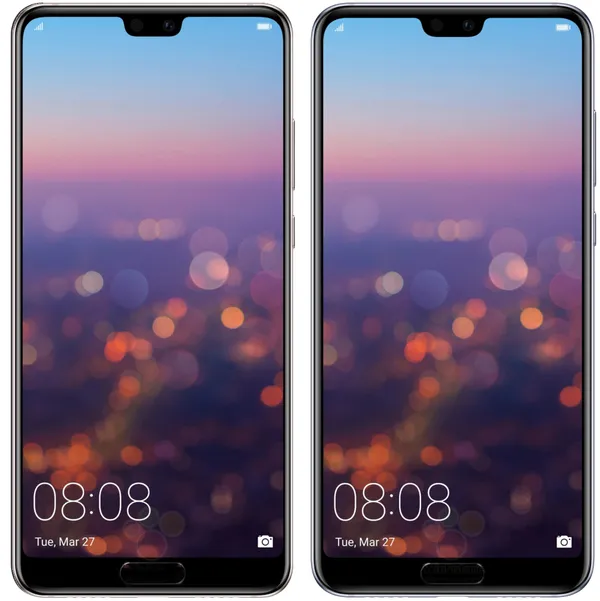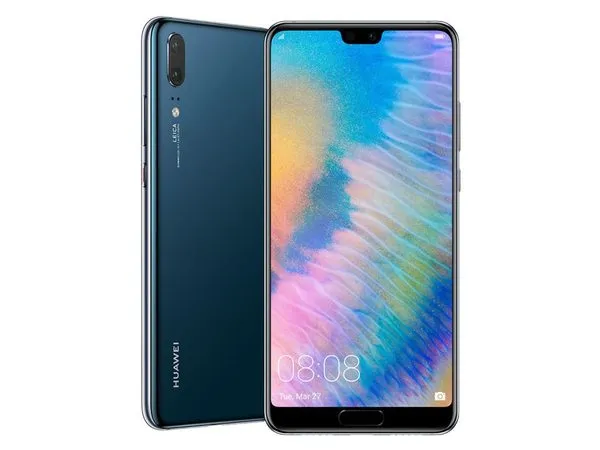Today's day is quite hot when it comes to the technology industry, because Xiaomi has already presented its new products, Nvidia is preparing for GTX 2018, and Apple has also planned a conference for this day (addressed to the education sector). However, you can not forget about Huawei, which has just announced its new flagship smartphones - P20 and P20 Pro.

Huawei P20
P20 is a smaller model, which, unlike its predecessors (P9 and P10), moves away from the metal casing to the recently fashionable glass separated by a metal frame. The equipment looks really elegant, it is quite slim (measures 7.65 mm thick), and when it comes to color versions, we can choose black, dark blue, pink-gold, champagne-gold and probably the most interesting gradient. The equipment has received the IP53 certificate, which means that it was only protected against splashes and dust.
The device received a 5.8-inch IPS panel (PenTile RGBW - the same screen as in Mate 10) with a resolution of 2244x1080 pixels (18.7: 9). Of course, as the leaks already suggested, in the upper part of the screen there is an indentation in the style of the iPhone X, which makes space for the front camera and sensors (however, there is an option that allows you to hide the indentation by darkening the screen on its sides). Below the display there is a fingerprint reader, which will also be used as a button to control the phone with gestures.

Under the hood, you'll find the 8-core Kirin 970 processor (4x Cortex A73 + 4x A53) from the Mali-G72MP12 GPU, which is supported by 4 GB of RAM. On the data we get 64 GB with the possibility of expanding with a microSD card (unless we use a second SIM card, because a hybrid slot has been used here). Huawei's original layout has also dedicated NPU for machine learning support. The battery life of 3400 mAh with support for fast charging of Super Charge is responsible for the working time of the P20.
An important element of the smartphone are its cameras. On the back there is a dual module developed in cooperation with Leica with the main 12 MP RGB sensor with optical image stabilization, f / 1.8 lens and a large pixel size (1.55 μm). This is supported by a 20 MP monochrome sensor known from Mate 10 (interestingly this has a brighter lens f / 1.6). The producer boasts a 4-stage autofocus (phase detection, laser, contrast and depth detection), and the whole is complemented by a two-tone LED lamp. This camera can take portrait pictures, offers various backgrounds and lighting effects, 2x optical zoom and records 4K movies at 60 fps. but also slo-mo 720p at 960 fps. In addition, new cameras are supported by artificial intelligence technology, which recognizes objects and sceneries, selects settings automatically, sets compositions, macro mode if necessary, or sets the horizon line. AI also helps with night shots, offering better quality photos in low light.
We should also not complain about the quality of the selfie, because in front there is a 24 MP camera with f / 2.0 lens. This can produce a bokeh effect, but it also supports Face Unlock, or face recognition for unlocking a smartphone.
Huawei P20 Pro
The P20 Pro is a more interesting device, mainly due to the triple camera. The equipment can also boast a bigger, because the 6.1-inch OLED panel (unchanged resolution). Under the hood, the amount of RAM up to 6 GB has been increased, and the data is 128 GB. Battery capacity has also been increased to 4000 mAh with Super Charge (22.5 W, 58% in 30 minutes). Besides, in spite of practically identical design, in this case we can count on full waterproof and dust tightness (IP67). This model, however, is slightly thicker and its profile measures 7.8 mm.

The triple rear camera signed by Leica consists here of 40 MP main sensor with f / 1.8 lens and optical image stabilization, an additional 20 MP monochrome (f / 1.6) and the third 8 MP color with telephoto f / 2.4. We find here the same 4-stage autofocus (very fast, for the objects up to 3 meters from the smartphone its time is 0.3 s), but the dual LED lamp received a built-in color temperature sensor and the whole can boast 3x optical zoom and 5x hybrid ( minimal loss of quality). Huawei also emphasizes the maximum ISO value of up to 51200. The front camera remained unchanged, and the manufacturer did not fail to show that Face Unlock works twice as fast as Face ID on the iPhone X.
P20 Pro jumped to the first rank of DxO Mark's smartphones, achieving 109 points, and P20 also received a very high score of 102 points, which gave him a second place (just before Galaxy S9).

Both models work under the control of Android 8.1 with the EMUI 8.1 overlay. Their prices are 649 EUR for P20 and 899 EUR for P20 Pro. It is still high amounts (especially for the Pro model), but cheaper than the competition, even in the form of Samsung flagships.